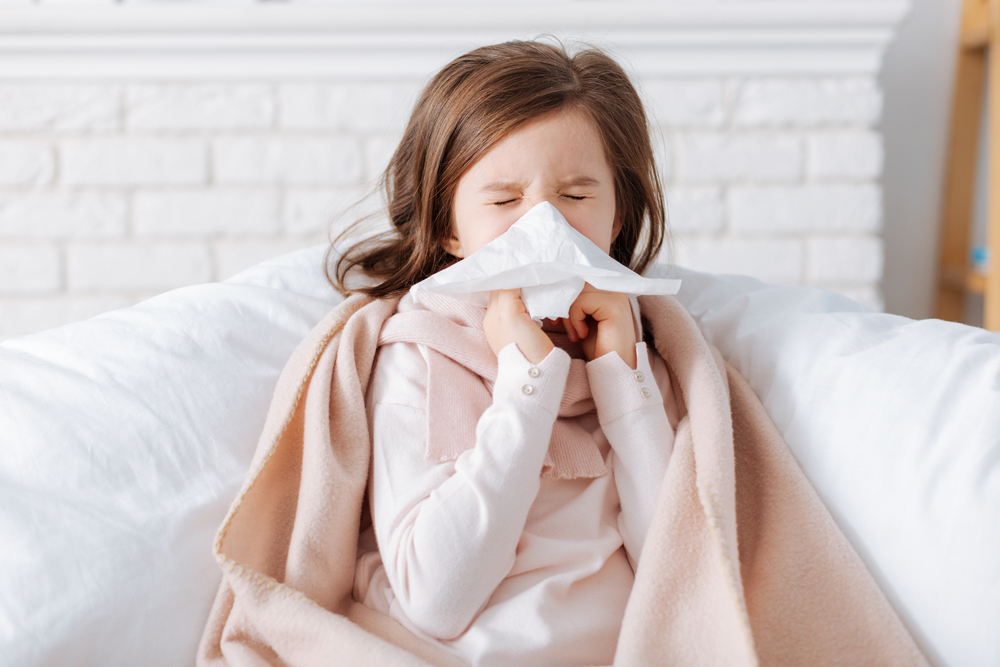This article appeared in Bridge Michigan. Read the full story here.
It was my first flu shot. I had to get it to do my residency rotations in the hospital. Despite being a doctor, I still hated shots. My friend’s wedding was in two weeks and I didn’t want to be sick. Rumors were the flu shot could make me sick. Anxious, I reluctantly rolled up my sleeve and received the vaccine. Two weeks later, I was at my friend’s wedding without a problem. I didn’t get sick with the flu that year either. The flu myths no longer bother me. Since then, every year, I get a flu shot without a second thought. One year, I did get the flu, but of the 10 years that I’ve been getting a flu shot, I found it to be benign and a good return on investment.
Adults ages 18-49 have a flu vaccination rate of only 34.9 percent. It’s understandable — at that age, people are relatively healthy. But despite that, this year, I’m urging everyone over the age of six months to get a flu shot.
COVID-19 and influenza present the risk of a “twindemic” that could overburden hospitals, testing locations and supplies. A flu outbreak could divert attention and resources from COVID-19 patients. The flu vaccine has been shown to reduce the risk of flu, hospitalizations and death. Yes, it’s possible to still get symptoms of the flu, but it’s a milder version, although everyone’s experience is different. About 45 percent of people living in the United States received a flu shot last year. Michiganders lack slightly behind the national rate. If large numbers of people forgo flu shots this year, this could increase the risk of a widespread outbreak, which then puts us at risk for a healthcare disaster once again. Let’s not forget, Michigan was a COVID-19 hotspot. There have been at least 112,612 cases of COVID-19 and 6,601 deaths in Michigan since the beginning of the pandemic.
The signs and symptoms of the flu are similar to COVID-19 so it’s difficult to distinguish between them without testing. This will put a higher burden on testing centers, test availability and turn around time on results. We saw what happened when the region was short on tests, hospital beds, supplies, and ventilators as COVID-19 peaked — we lost lives. The treatment for both illnesses are relatively the same in terms of supportive care with intravenous fluids, breathing treatments, and fever reducing medications, all of which we cannot afford a shortage of.
Doctors’ offices such as my own, are taking precautions by offering no waiting rooms, no lines, no walk-ins, sanitization of vaccine stations, and healthcare workers who are masked with face shields. I’m comfortable getting my flu shot and have no problem asking my parents, who are in their 70s, to do the same. If uncomfortable with a doctor’s office, the local health department or drug stores are options. Vaccinefinder.com lists where one can get a flu shot including egg-free for those with egg allergies and even drive through options.
To date, COVID-19 has killed more than 178,000 Americans. The flu killed about 34,000 people here last season. We feel no sense of control over preventing COVID-19 other than masking, social distancing and frequent hand-washing, all of which are great to prevent the flu as well. But with the flu, we do have some control — by getting vaccinated.
I still hate shots. However, I’m so grateful that I had to get a flu shot back in my residency training, because now, getting a flu shot is just second nature. And this year more than any other year, it can really save lives. Not only my own, but others too. If you haven’t had the vaccine, give it a shot.

